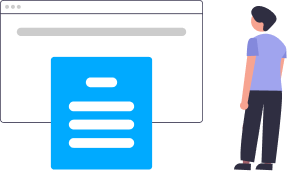MODULE - 1 Est. Duration: 57 min
MODULE - 2 Est. Duration: 48 min
MODULE - 3 Est. Duration: 1 hr 9 min
MODULE - 4 Est. Duration: 41 min
MODULE - 5 Est. Duration: 42 min
MODULE - 6 Est. Duration: 23 min
MODULE - 7 Est. Duration: 56 min
MODULE - 8 Est. Duration: 25 min
MODULE - 9 Est. Duration: 17 min
MODULE - 10 Est. Duration: 24 min
Unit 2 .3
WORD FORMATION - I
Est. Duration: 2 Minutes
Bookmark This
Equipped with letters from the ‘be’ group and ‘alif’, let’s take a look at some words now. We’ll start with words that begin with ‘alif’, i.e; words where ‘alif’ is in the initial position. (More on positions later.)
Let's start by looking at the word "aap", meaning "you":
- aap
- आप
Above: The word "aap"
We can clearly see that this can be written simply by using an ‘alif madd’ and placing a ‘pe’ after it. Look at the break-down below. Once again, remember to read right-to-left:
- aap
- आप
- pe
- पे
- alif madd
- अलिफ़ मद
Above: ‘alif madd’ + ‘pe’ = “aap”
Similarly, let's look at the word "aab", meaning "water", created simply by using an ‘alif madd’ and a ‘be’:
- aab
- आब
- be
- बे
- alif madd
- अलिफ़ मद
Above: ‘alif madd’ + ‘be’ = “aab”
Well, that was simple, wasn’t it? We just saw how to create our very first words in Urdu. Commit this to memory. Things start getting more interesting from here.





.png)


